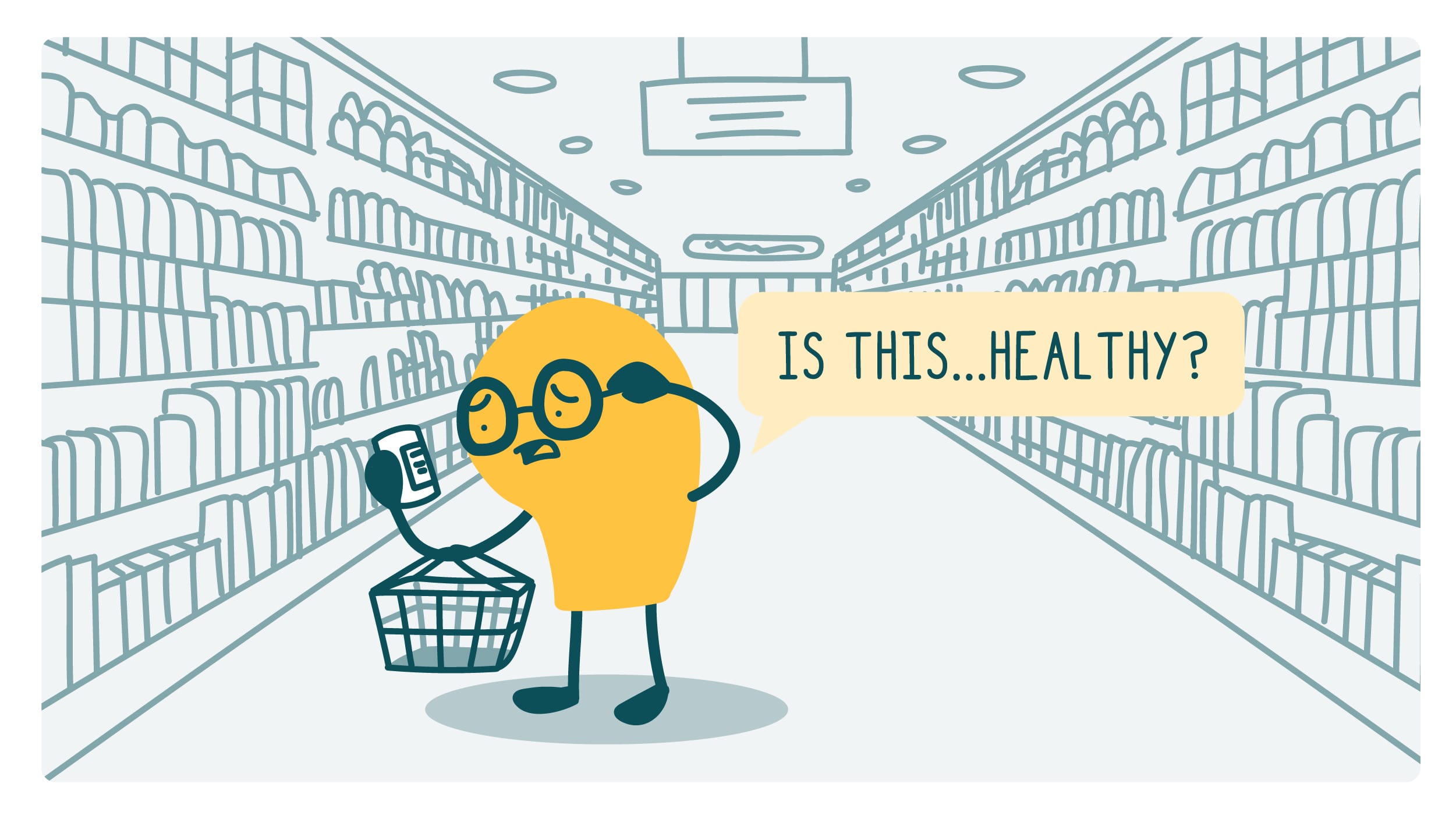
In September, FDA proposed new criteria for using the term “healthy” on food labels. Under the new rule, food products would need to have a certain amount of food from at least one of the food groups (like vegetables or grains) recommended in the Dietary Guidelines for Americans. Products would also have to meet specific limits for saturated fat, sodium, and added sugars. We’re sure you can figure out where our brains went: Will this new “healthy” claim on foods actually help people make informed choices at the grocery store?
We all know that product labels can be misleading. Labels are often designed to sell products, not to help people make decisions that will benefit their lives. If you’re a parent, you’ve almost certainly had to explain to your unamused, unimpressed children that — despite the name containing the word “fruit” — fruit snacks are actually candy! When it comes to people trying to make healthy choices, label lies and embellishments can be a real problem.
It’s also no secret that the way our foods are labeled is somewhat flawed. While many claims on food packaging (think “less fat” and “good source of fiber”) are regulated by FDA, they can be misleading, too. A bag of potato chips with “40% less fat” is still a processed food that’s high in calories and low in nutritional value. A “heart-healthy” breakfast cereal may be high in fiber, but it can still have tons of added sugars. And once you get to calling foods “clean” or “natural,” it’s basically the Wild West out there.
Of course, there is a label that tells it like it really is: the good old Nutrition Facts label! It’s not particularly exciting, but at least it’s honest about what’s in our food. Unfortunately, the Nutrition Facts label has a few problems of its own if you’re looking at it through a health literacy lens. In a word, it’s… confusing! To use it effectively, you need to understand numbers, like Percent Daily Value. You also need some pretty serious background knowledge to make meaning of those numbers. For example, you need to know that some foods high in total fat can be healthy if they’re low in saturated fat.
FDA also announced it will be working on a “front-of-package labeling system” that empowers people to make healthy choices by more effectively communicating nutrition info. While we don’t have any information yet on what this new labeling system might look like, we’ll be following the news closely — and we know you will, too. In the meantime, we’ll keep noodling on how we can improve our food labeling system. A look across the pond may offer some inspiration: For example, the UK has tried out a “traffic light” approach — a color-coding system that tells consumers how the product fares in terms of key nutrients like fat, sugar, and salt.
We won’t sugar coat it, dear readers — this one’s tricky. Even before getting into systemic problems or issues with nutrition science, we’re dealing with super complicated, number-heavy, very personal (ahem, what you put in your body) communication that’s supposed to be appropriate for everyone — people with very high and very low literacy and numeracy skills, people who need to follow a special diet and people who don’t, and so forth. It’s a tall order.
We certainly don’t have all the answers. So we’re curious to hear from you: What do you think needs to happen to improve food labels? How can we create understandable nutrition guidance that helps people make healthy choices? Respond to this email or tweet us @CommunicateHlth!
The bottom line: FDA has proposed new criteria for putting “healthy” on food labels, and it has us thinking about how to tame the trickiness of communicating nutrition info on food packaging.
Browse recent posts